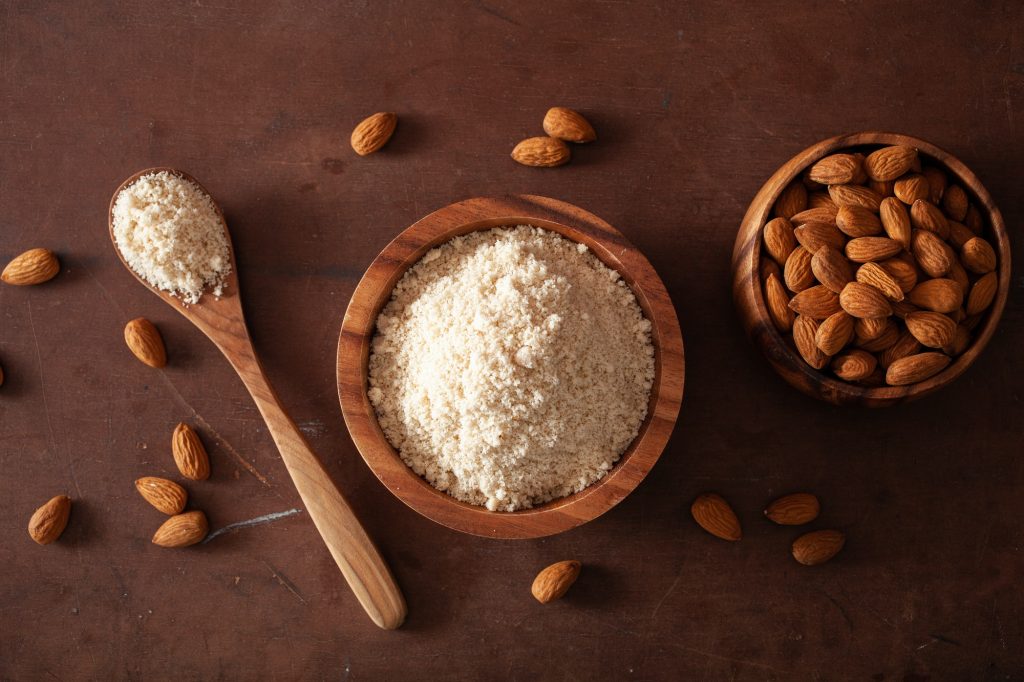At a time where much emphasis is placed on appropriate and adequate nutritional intake, it is no wonder comparisons are made between Hazelnut flour and Almond flour.
Generally, the processed form of the Hazelnut and Almond is always called flour but they never end up as fine as Wheat flour hence the reason it is alternatively called either Hazelnut or Almond meal.
Asides from being able to produce flours that serve culinary purposes, in their processed form, Hazelnuts can be made into butter, cooking oil and can be used as an ingredient for baking and desserts, confectioneries. On the other hand, Almonds not only serve culinary uses but could be used as an ingredient for skincare.
Dieticians, cooks, and chefs have always debated on the better choice between Hazelnut flour and Almond nut flour. The question of their differences is hinged on the differences and similarities between the nutritional elements of both kinds of flour.
Take note that although there are differences between both kinds of flour, both still possess essential nutritional elements necessary for bodybuilding.
Does one kind of flour taste better than the other? Are there meals that you could use either kind of flour for? Can each kind of flour serve as a substitute for each other? You are in a dilemma of choosing between either option for your diet makeup? This guide is for you.
Hazlenut Flour Explained
To get your Hazelnut flour, all you need is a blender and a cup of hazelnuts and the blend till you do not see the nuts anymore. While blending, you mustn’t blend for long unless you want it like butter. Your Hazelnut flour can come in handy for breading, chocolate cookies, pie crust muffins or cupcakes, waffles, pancakes.
If you are looking for a gluten-free diet, low carbohydrate, weight loss, or diabetes management, hazelnut flour should be among your options. They are a rich source of mono and polyunsaturated fats and contain a good amount of omega acids. Imagine a dessert where you do not worry about adding weight.
Hazelnuts contain antioxidants that help decrease high cholesterol and also promote the body from oxidative stress. They also serve as good sources of vitamins and minerals. They help boost the heart’s health and prevent cardiovascular issues.
Hazelnut flour can be made into different recipes.
Almond Flour Explained
Almond flour and Almond meal are often used interchangeably but they are quite different.
Almond flour is made by blanching the almonds in boiling water to remove the skins, then grinding and sifting to extract the flour while Almond meal is made by grinding the almonds with their skin. The major difference between both the Almond flour and meal is the texture; one is coarser while one is finer.
Known for its richness in vitamin E, Almond flour is also perfect for managing diabetes as they help control blood sugar levels. Asides from reducing cholesterol levels, Almond flour improves your digestive system since it is a high fiber flour. For strict weight-loss diets, Almond flour is a perfect addition to your meal as it contains low fat
Almond flour can be used for baking bread, cookies, cake, almond flour pasta, and macarons which are made with almond flour. A perfect substitute for wheat flour is Almond flour but Almond flour does not produce the fluffy texture wheat flower produces.
Hazelnut flour Vs. Almond Flour. Which one is better?
Before pinpointing their differences, note that choice for either kind of flour is based on your preference which is in terms of the taste difference, nutritional elements, and uses. Both can serve as substitutes for wheat flour.
Their flavor, taste, and smell is major difference between both flours. While Almond flour has a more nutty smell, Hazelnuts have a sweeter smell. Almond flour is not as sweet as Hazelnut flour and does not give off the buttery feel as much as Hazelnut flour does. So if you intend to make the flour into the butter, Hazelnut is your choice.
Compared to Almonds, Hazelnuts have more fat content so if you are on a low diet and you have to choose between either option, Almond flour is your best bet. While Almonds have 49.33g, Hazelnut flour has 60.75g. In addition, to measure calories intake, Almond flour has fewer calories than hazelnut flour.

If you seek affordability and availability, you may want to consider Almond flour because Hazelnuts are quite scarce and so their products are more expensive than Almond flour. This reason contributes to why it is mostly used for special desserts or delicacies.
In addition, the Hazelnuts flour is not as easy to use as the Almond flour as using it requires extra attention.
Almond flour possesses a higher protein content than Hazelnut flour. For every 100g of hazelnuts, there is 21.15 g of protein while for the Hazelnuts, there is 14.95g per 100g.
Almond flour tends to last longer than Hazelnut flour. If you consider making huge quantities or want to buy in bulk, for shell life duration, Almond flour lasts longer than Hazelnut flour.
Hazelnut flour gives you a more crisp texture in desserts and burns easier than Almond flour.
Both flours can serve as substitutes for each other in recipes and desserts only that results in using either option. If you are going to be using Almond flour in place of Hazelnut flour in a cake recipe, you may want to consider combining it with wheat or quinoa to give a fluffy texture.
In conclusion, we’ll favor picking almond flour over hazelnut as it’s well-rounded and offers more nutritional benefits.
What should I know about using Hazelnut flour and Almond Flour?
Here are some tips when baking for using hazelnut and almond flour.
- Try not to replace no more than 25-30% of the flour in your baking recipe. This would bring a nutty and rich texture to your baked goods.
- Although both kinds of flour can serve as substitutes for each other, to get the best taste and nutritional elements, stick to a recipe that is designed for each kind of flour.
- They both can serve as additional elements for your smoothies.
- If you have any nut allergies, you should avoid either one till you know they are safe for you. You could look out for symptoms of an allergy such as itching, swelling around the mouth minutes after consuming the meal.
- Because they are nut flours, their oil content is on the high side and they are prone to deterioration once exposed to air. They should be stored in the freezer for proper preservation.
- Ensure they are stored in air-tight containers and sealed bags.
- When properly stored, they can last between 2 to 4 months.
- You can determine if either flour is safe for consumption by perceiving the odor and checking for discoloration.
- Ensure your flour never comes in contact with water. This would cause molds to appear on the flour.
- Consult your dietician before choosing if you are on a strict diet.
Final Note
The gluten-free flours can be used for different culinary purposes. Since they possess slightly different nutritional elements, your preference for either option depends on what you need the flours for and if they would produce the results you seek.
For health-related issues such as managing weight or controlling blood level, before choosing an option, do well to see your physician.
Keep reading:

